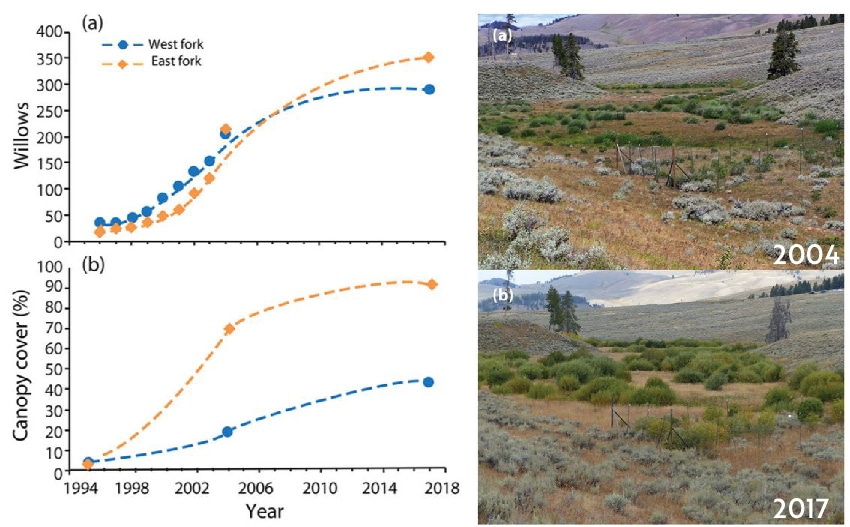A 2019 study demonstrated the cascading effect that a single species can have on an ecosystem, as beavers bounced back in the two decades after wolves were reintroduced into Yellowstone. This is proof the reintroduction is a viable strategy, and that it should be better studied and employed in order to provide resilience to our faltering ecosystems.
—
What is Species Reintroduction?
Species Reintroductions are attempts to return species to parts of their historic ranges.
In the past, reintroduction was used for species preservation. But now, this has shifted to restoration of ecosystem function, especially as these face fragmentation and a shifting climate.
The Yellowstone Stories
Reintroduction of wolves back in Yellowstone is said to be one of the most successful conservation endeavours in history. Not only has the wolf population continued to thrive, the direct and indirect consequences of the reintroduction have benefited the overall quality of the Yellowstone ecosystem.
You may also be interested in: The Fall and Rise of the American Grey Wolf
When wolves disappeared from Yellowstone, the elk populations were under much weaker predatory pressure. This led to high populations of elk tarrying in winter months and putting excessive pressure on plants, mostly affecting young willow, aspen and cottonwood. Beavers suffered indirectly from this as they need willows to survive in winter – a good example of the knock-on effects in an ecosystem.
Today, with three times more elks than in 1968, willow stands are robust. The predatory pressure from the wolves keeps elk on the move and willows avoid intense browsing.
A study by Beschta and Ripple in 2018 sampled heights of willow along the Black Deer Creek, located in the northern range of the Yellowstone National Park, from 2004 and 2017. Comparing the records from the 1990s, the willow heights went from ≤52 cm to ≥200 cm in 2017. Canopy cover over the stream, essentially absent in 1995, had increased to 43% and 93% along the West Fork and East Fork of the creek, respectively.

Willow count and canpoy cover over beaver inhabited streams. Picture evidencce of willow regrowth after wolf introduction in Yellowstone Park. Source: Beschta, Ripple (2019).
With the thriving of willow, beaver colonies have also grown from one in 1995 to 19 by 2015 with four active dams in use.

Source: Beschta, Ripple (2019).
Scientists are certain about the continuous benefits of reintroduction of wolves in Yellowstone will bring.
It was never intended for wolves to save the Yellowstone beavers, but this goes to show the potential of reintroduction. In other parts of the world, the practice continues to bring good news for conservation.
Other Recent Successful Stories
- Bilbies in New South Wales, Australia
In 2019, 50 adult bilbies were released into a feral predator-free breeding area at Mallee Cliffs; and in 2020, the first baby Bilbies is going to be born at Mallee Cliffs National Park in over 100 years. - Red Kite in England
30 years after 13 red kites were reintroduced to the UK, there are nearly 2,000 breeding pairs of red kites in nearly every English county. - Water Buffalo in Danube Delta, Ukraine
A herd of seven animals were successfully released on Ermakov Island, in the Ukrainian part of the Danube Delta in 2019.
This news is certainly a big motivation for all, as the worrying decline in animal populations has most of us worried. As we realize the importance of our fragile ecosystems, more conservation efforts like these will surely take place, possibly starting a more sustained trend.
This article was written by Wing Ki Leung. Cover photo by Eva Blue on Unsplash










![The Statistics of Biodiversity Loss [2020 WWF Report]](https://u4d2z7k9.rocketcdn.me/wp-content/uploads/2020/12/lprwinkyTHB-544x306.jpg)





